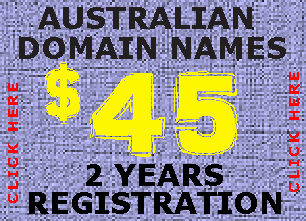The first European settlement in the area later known as Victoria was established in October 1803 under Lieutenant-Governor David Collins at Sullivan Bay, Victoria on Port Phillip. It consisted of 308 convicts, 51 marines, 17 free settlers, 12 civil officers, a missionary and his wife. They had been sent from England in HMS Calcutta under the command of Captain Daniel Woodriff, principally out of fear that the French, who had been exploring the area, might establish their own settlement and thereby challenge British rights to the continent.
Victoria’s next settlement was at Portland, on the west coast of what is now Victoria. Edward Henty settled Portland Bay in 1834. Shortly after arriving from Tasmania in December 1834, Henty (aged 24 yrs) set off for thickly-populated country inland from Portland, with resident whalers, an Aboriginal woman abducted by one of them and 14 hunting dogs (a cross between greyhound and wolfhound}. On spotting a single Aboriginal man, the men set the dogs on him.
Melbourne was founded in 1835 by John Batman. From settlement the region around Melbourne was known as the Port Phillip District, a separately administered part of New South Wales.
Between 1836 and 1842, Victorian Aboriginal groups were largely dispossessed of territory bigger than England. By January 1844, there were said to be 675 Aborigines resident in squalid camps in Melbourne. Although the British Colonial Office appointed 5 “Aboriginal Protectors” for the entire Aboriginal population of Victoria, arriving in Melbourne in 1839, they worked “. . . within a land policy that nullified their work, and there was no political will to change this”. “It was government policy to encourage squatters to take possession of whatever land they chose, . . . that largely explains why almost all the original inhabitants of Port Phillip’s vast grasslands were dead so soon after 1835”.
By 1845, fewer than 240 wealthy Europeans held all the pastoral licences then issued in Victoria and became the patriarchs ” . . . that were to wield so much political and economic power in Victoria for generations to come”.
With the Aboriginal population dispossessed of their lands and their management of fire having been disrupted for almost 15 years, the Colony experienced for the first time its largest ever bushfires, burning about 25% of the land area of Victoria on Black Thursday (1851) on 6 February 1851.
On 15 November 1851, the British Government separated the area from New South Wales, proclaiming a new Colony of Victoria. Days later, still in 1851 gold was discovered near Ballarat, and subsequently at Bendigo. Later discoveries occurred at many sites across Victoria. This triggered one of the largest gold rushes the world has ever seen.
The colony grew rapidly in both population and economic power. In ten years the population of Victoria increased sevenfold from 76,000 to 540,000. All sorts of gold records were produced including the “richest shallow alluvial goldfield in the world” and the largest gold nugget. Victoria produced in the decade 1851–1860 20 million ounces of gold, one third of the world’s output.
Immigrants arrived from all over the world to search for gold, especially from Ireland and China. Many Chinese miners worked in Victoria, and their legacy is particularly strong in Bendigo and its environs. Although there was some racism directed at them, there was not the level of anti-Chinese violence that was seen at the Lambing Flat riots in New South Wales. However, there was a riot at Buckland Valley near Bright in 1857. Conditions on the gold fields were cramped and unsanitary; an outbreak of typhoid at Buckland Valley in 1854 killed over 1,000 miners.
In 1854 at Ballarat there was an armed rebellion against the government of Victoria by miners protesting against mining taxes (the “Eureka Stockade”). This was crushed by British troops, but the discontents prompted colonial authorities to reform the administration (particularly reducing the hated mining licence fees) and extend the franchise. Within a short time, the Imperial Parliament granted Victoria responsible government with the passage of the Colony of Victoria Act 1855. Some of the leaders of the Eureka rebellion went on to became members of the Victorian Parliament.
The first foreign military action by the colony of Victoria was to send troops and a warship to New Zealand as part of the Maori Wars. Troops from New South Wales had previously participated in the Crimean War.
In 1901 Victoria became a state in the Commonwealth of Australia. As a result of the gold rush, Melbourne had by then become the financial centre of Australia and New Zealand. Between 1901 and 1927, Melbourne was the capital of Australia while Canberra was under construction. It was also the largest city in Australia at the time.
On Saturday 7 February 2009 (“Black Saturday”), the state was affected by the 2009 Victorian bushfires, resulting in 173 deaths.
Information supplied here complies with and follows the Guidelines of Wikipedia for re-using content Content from this page is drawn from Here. All content is the property of their respective copyright owners.

